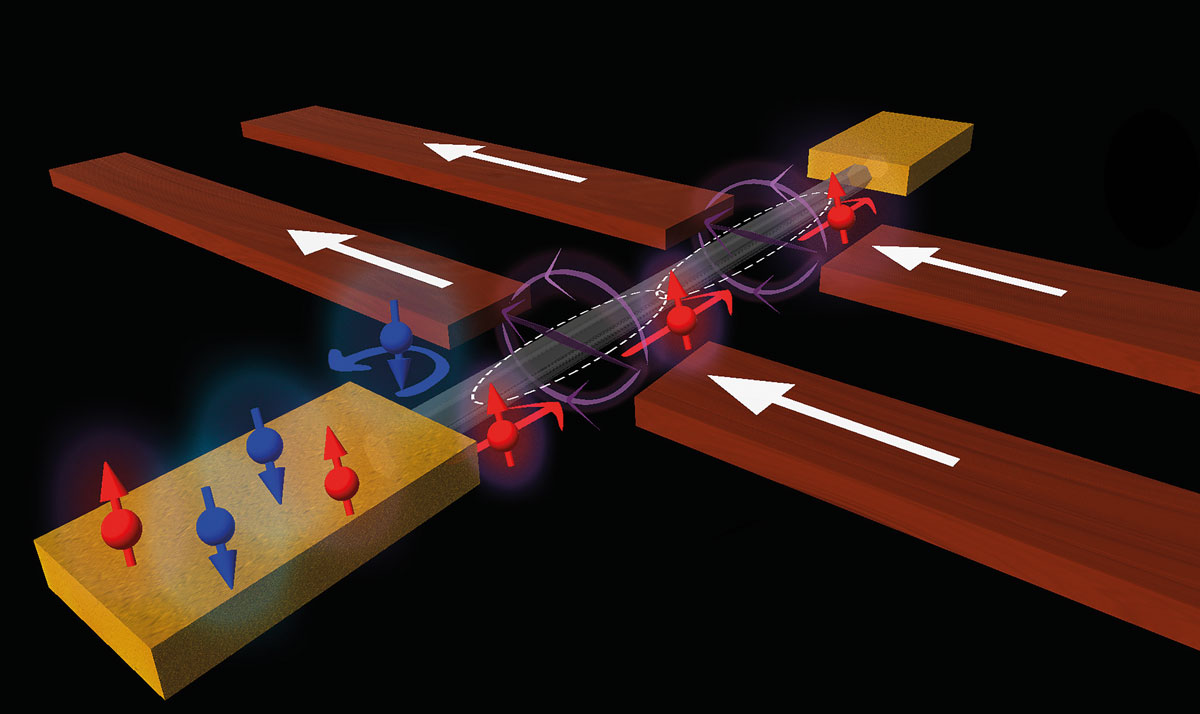Spin valve uses coupled quantum dots and tiny magnetic fields

Researchers in Switzerland and Italy have developed a new method for generating currents of spin-polarized electrons without the need for large external magnetic fields. This could enable the development of devices that are compatible with superconducting electronic components, paving the way for the next generation of highly efficient electronics.
Emerging in the 1980s, “spintronics” is dedicated to creating practical devices that exploit electron spin. Semiconductor-based spintronics systems have garnered particular interest because semiconductors can be integrated within modern-day electronics with the aim of improving the efficiency and storage capacity of devices. But to make useful spintronics devices, researchers must control and detect the spin state of electrons with a high level of accuracy.
One way of controlling electron spin current is a “spin valve”, which usually consists of a non-magnetic material sandwiched between ferromagnetic materials. Electrons in one spin state (say up) can propagate through the device, while spin-down electrons are reflected or scattered away. The result is a “spin polarized current” in which all electrons are either spin-up or all spin-down) – at least in principle.
In practice, however, such devices are either not very efficient or require very large polarizing magnetic fields. As a result, researchers are looking for alternative methods to make spin valves using semiconductor materials.
Now, physicists at the University of Basel along with collaborators at the National Enterprise for nanoScience and nanoTechnology in Pisa have created a device that can create spin currents without the need for large external magnetic fields, but at a high efficiency. In a paper (Communications Physics 3 135) they describe how a pair of coupled quantum dots formed in an indium arsenide nanowire with nearby individual nanomagnets can be used as a spin valve with an electrically tuneable spin polarization of up to ±80%.
The researchers created the quantum dots by electrically defining two areas where electrons in the nanowire are confined in all three directions. They then used ferromagnetic side gates to generate small local magnetic fields across each dot. This gate-based configuration means that only a very small magnetic field of up to 40 mT is needed to obtain a very high efficiency.
The device operates by generating a spin-polarized tunnel current using the first dot, which is then detected by the second dot. By magnetizing the ferromagnetic split gates in parallel or anti-parallel, the researchers can decide whether electrons of a certain spin can pass through each part of the device. The probability that an electron with that spin tunnels through both dots can be controlled using the ferromagnetic side gates, allowing
a spin-polarized current to flow when they are aligned but no current at all if they are anti-parallel.
Daisy Shearer